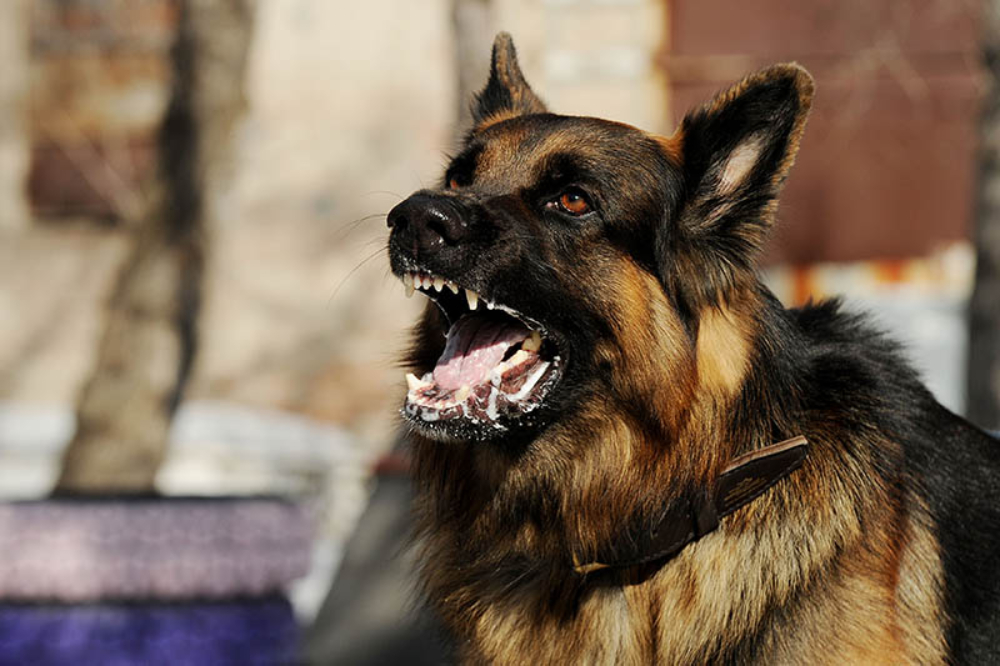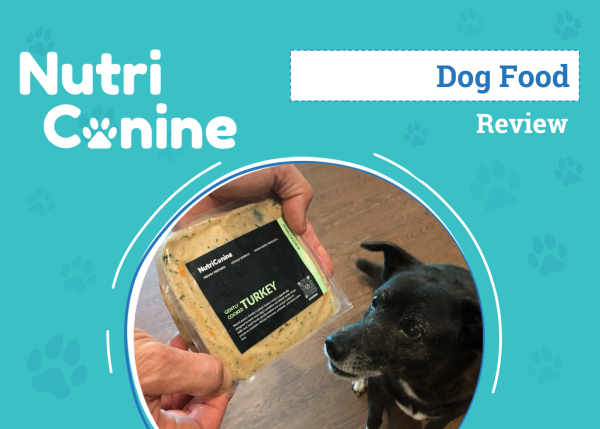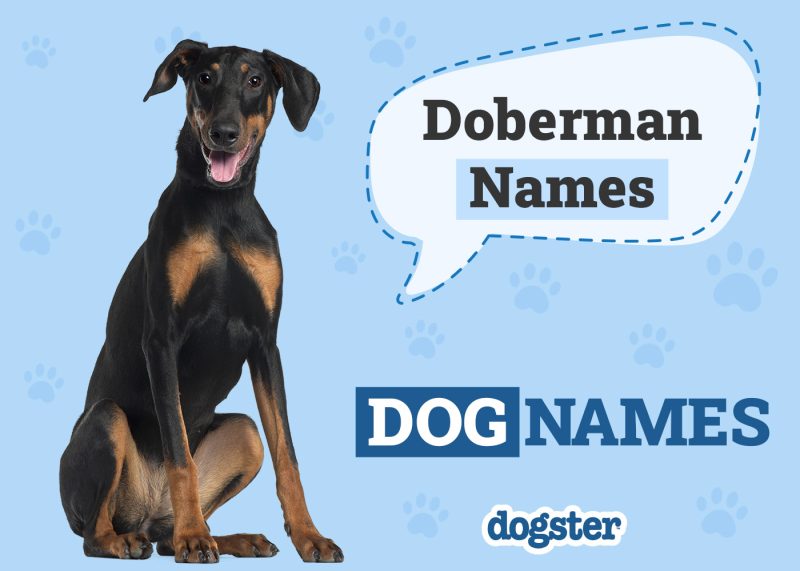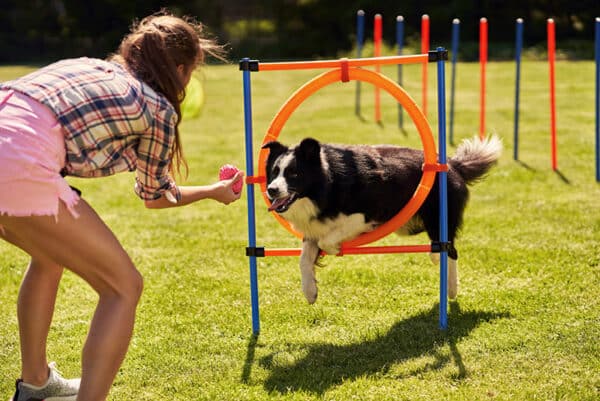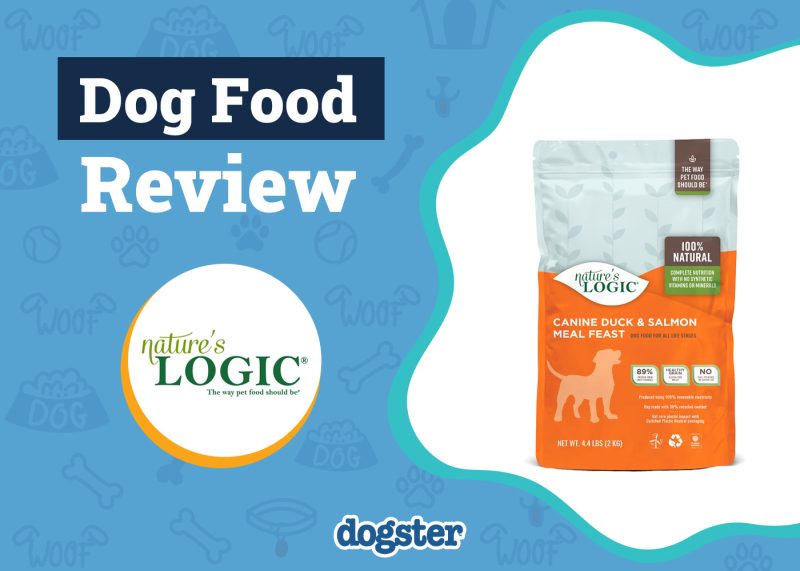In this article
View 3 More +Aggression in dogs is a serious issue that some owners find themselves needing help with. A dog may exhibit aggressive behavior for several different reasons, though fear is typically the primary one.
That said, there are at least 10 types of dog aggression, and understanding what your dog is struggling with is essential for getting help for both of you. Several different types of aggression may be seen in one dog, and the motivation for the aggressive behavior can develop and change over time.
If your dog is showing any signs of aggression you should consult with your veterinarian as soon as possible, and they may refer you to a qualified canine behaviorist.

The 10 Types of Dog Aggression
1. Barrier Aggression
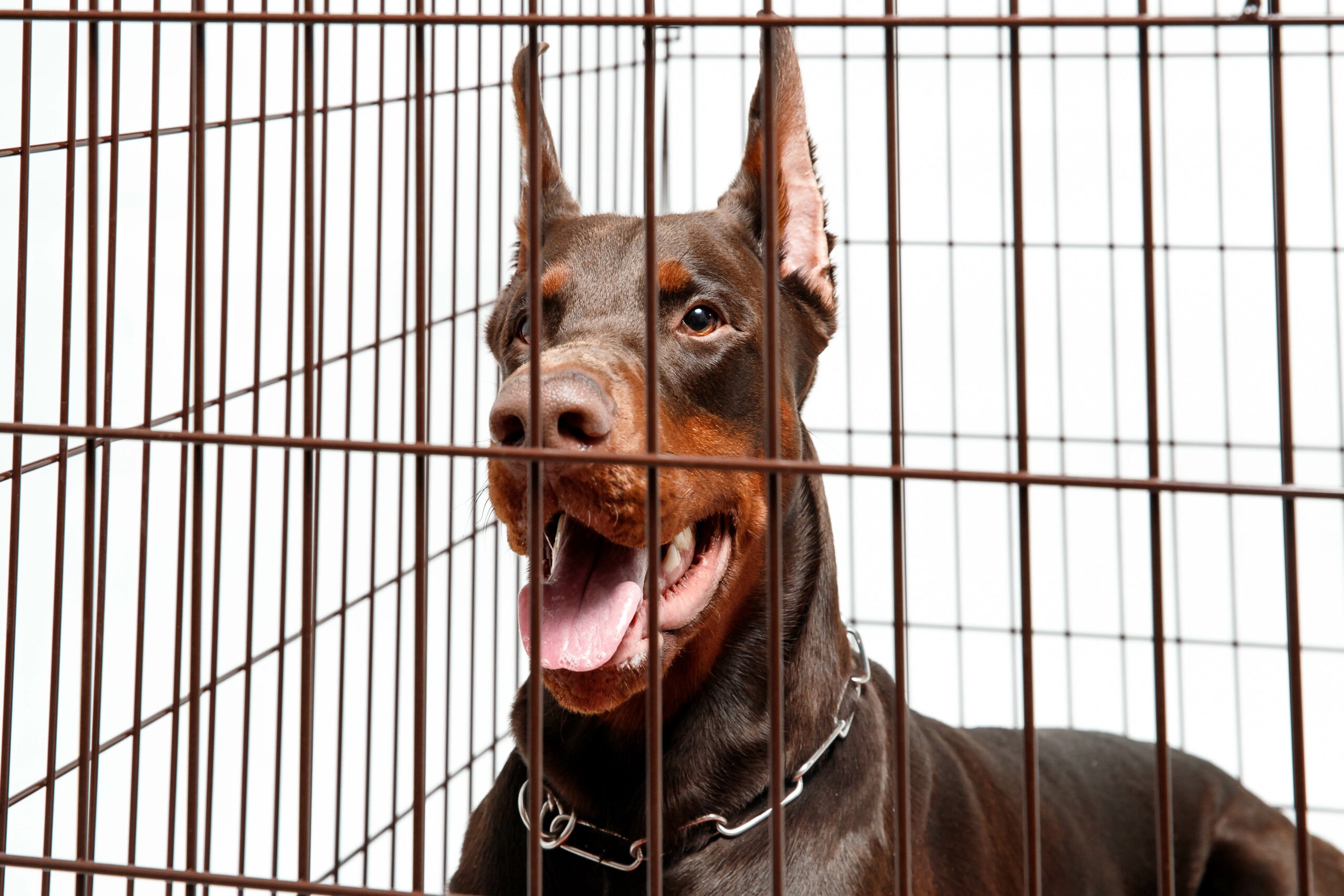
A barrier can be a fence, gate, door, or window, any obstacle preventing the dog from getting at what is triggering them. This is a fairly common kind of aggression, and you’ll see the dog growling, barking, and lunging at something beyond the barrier, such as the mail carrier. This is also a form of frustration aggression.
2. Disease-Related Aggression
An infection or health condition can sometimes lead to aggression. The most well-known is rabies, but there’s also hypothyroidism and neurological problems like a brain injury and epilepsy. In addition, medical problems that affect a dog’s perception of the world, for example blindness, can lead to fear aggression.
3. Fear Aggression

Most aggression that dogs display is typically based on fear. That said, fear aggression starts with the dog attempting to avoid a situation, which could be another animal or a person. It might also be based on fear of an object, such as a vacuum cleaner or a noisy washing machine. A fearful dog will attempt to distance themselves from what is scaring them and show body language like freezing or yawning. If these forms of communication are ignored or misunderstood, dogs may resort to aggression, such as growling, lunging and biting.
4. Frustration Aggression
Frustration aggression can also be called redirected aggression and is similar to barrier aggression. It occurs when a dog is frustrated about being unable to reach something but takes out their frustration on whatever is nearby. This might be a person, another animal, or an object.
5. Inter-dog Aggression
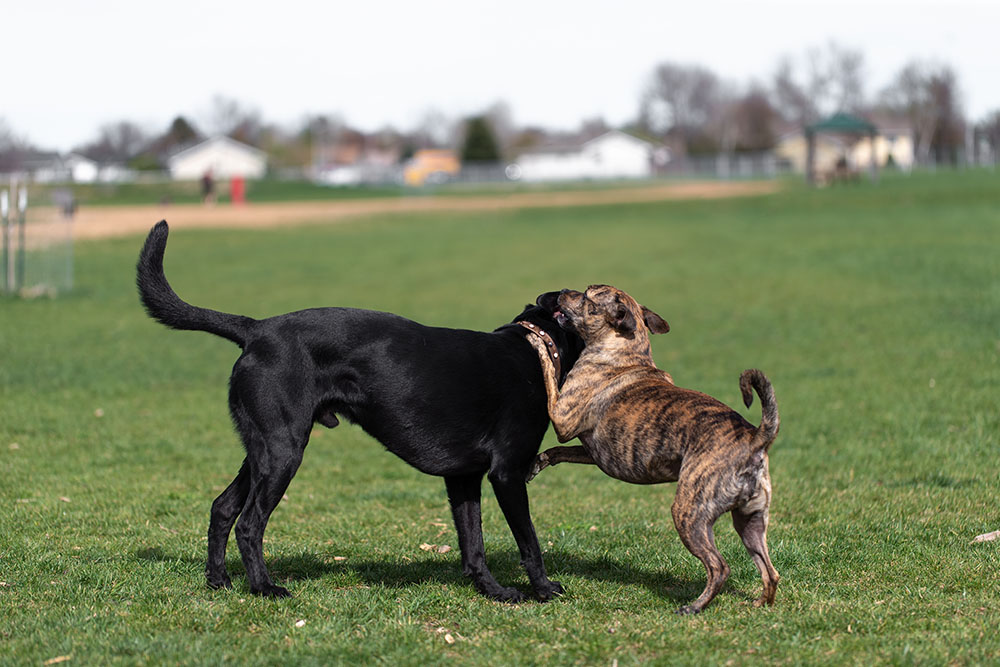
Inter-dog aggression occurs when a pup shows aggressive behavior toward other pups. Canines that weren’t socialized well or have a traumatic history involving other canines can lead to a dog that is reactive in the presence of other dogs. Aggression can also develop between dogs that live together, this can occur for a variety of reasons such as competition for resources, fear, anxiety, or adult dogs dealing with over-exuberant puppies that won’t leave them alone.
6. Maternal Aggression
Most mothers, including dogs, will react aggressively if their offspring are under threat. This behavior usually disappears once the weaning period begins. Dogs that go into a false pregnancy may show similar behaviors and redirect maternal instincts to objects like toys.
7. Pain Aggression

Pain will turn just about everyone cranky! When a dog is in pain, they are more likely to snap or attempt to bite if someone tries to touch them. They might be expecting to feel more pain when someone touches them and so trying to avoid physical contact. If the dog associates a painful experience with something or someone they may develop fear related aggressive behaviors in the future.
8. Possessive Aggression
Possessive aggression is also known as resource guarding, which is when a dog becomes aggressive and over-protective over things that are of high value to them, such as food, treats, a dog bed, and toys. Early training of puppies can help prevent possessive aggression because they can be taught that they don’t need to worry about losing a specific item. Teaching the ‘drop it’ and ‘leave it’ commands are helpful. Seek advice specific to your dog from a behaviorist and in the meantime try to avoid situations that are likely to evoke possessive aggression, for example put toys away and avoid giving high value chews or treats that your dog might guard.
9. Predatory Aggression
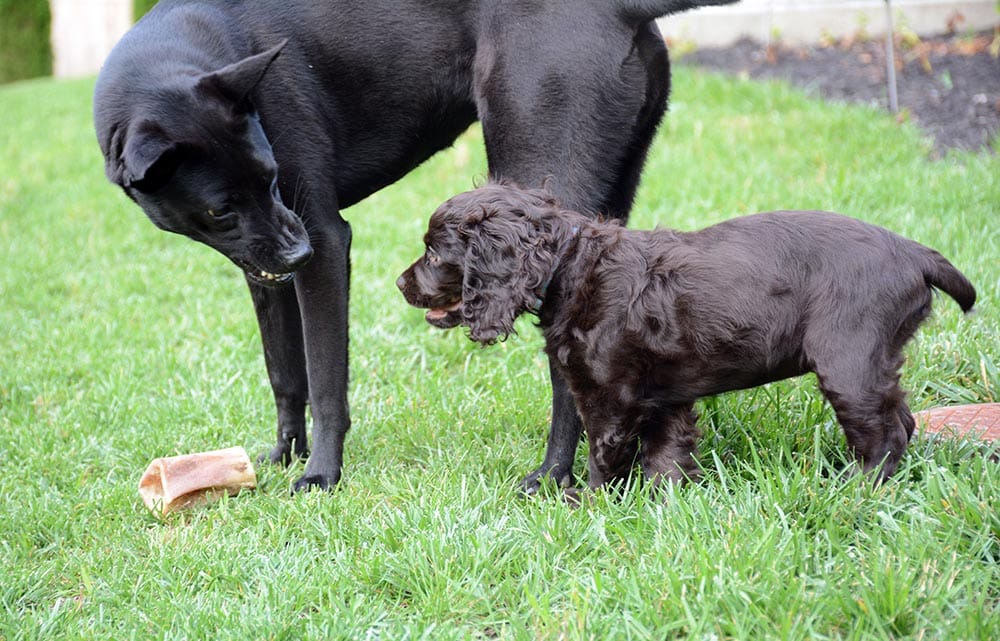
Dogs are predators, so it’s no surprise that they will exhibit predatory aggression from time to time. But hunting dogs like hounds are more likely to exhibit predatory aggression because of their high prey drive. Some dogs might rush at prey without really knowing what they’ll do if they catch it. However, other dogs are focused on hunting, capturing, and killing. This type of aggression is quiet, with the dog not typically making any sound and suddenly rushing to give chase.
10. Territorial Aggression
Territorial aggression is one of the most common forms of dog aggression. If a stranger is approaching the home or entering the yard, they might feel that their living space is being invaded. Some breeds are more protective than others, and these dogs feel that they must protect their owners and property, even when there isn’t a threat.

What Can Cause a Dog to Be Aggressive?
You might think that certain dog breeds are bred to be aggressive, but this isn’t always accurate. It’s easy to understand why someone might be wary of a large dog with a big head and a barrel chest. But it ultimately comes down to a few factors:
- Genetics: Behavioral traits can be inherited from the parents. For example, if the mother displays fear aggression, her puppies might display the same behavior.
- Breed: Some breeds were bred for specific duties, such as guard dogs. This is not to say that these breeds will all be aggressive, but if they’re trained in a specific way, they might be more likely to show aggressive behavior.
- Past Trauma: Dogs that have been abused and neglected in the past can be more reactive under certain circumstances.
- Development and Socialization: A dog that doesn’t receive adequate socialization will be more likely to display fear aggression and in some cases, resource guarding.
Other unexpected circumstances, such as illness or pain, can also lead to aggression. Any dog showing sudden behavior changes needs to be examined by a vet to rule out underlying medical issues.
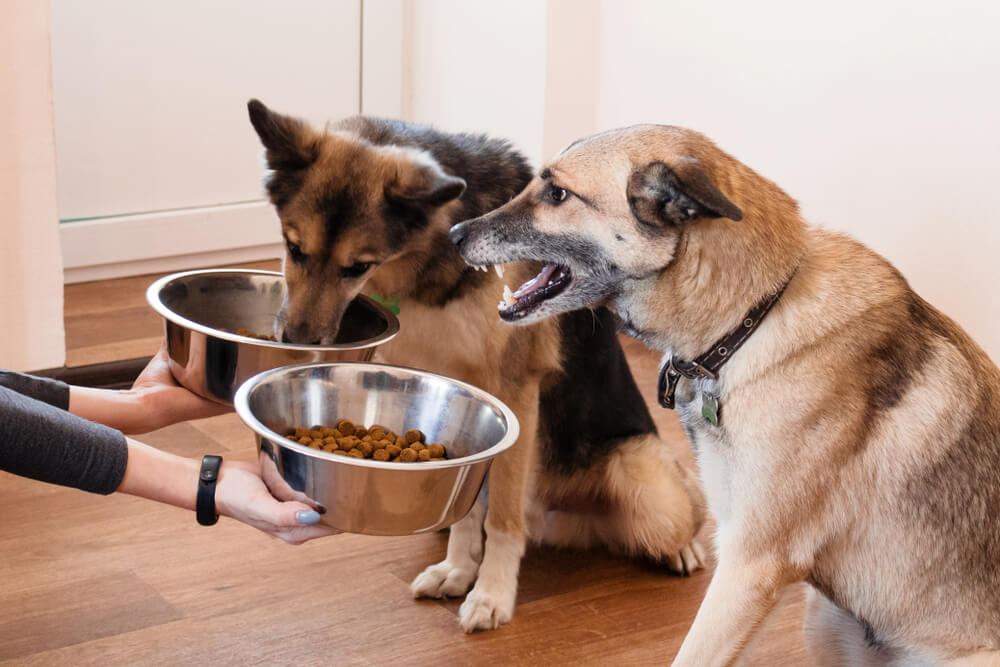
What Are the Warning Signs Before Aggression?
Learning to read your dog’s body language is essential, as it can help prevent problems before they start. It helps you to understand what your dog is trying to communicate before they feel forced to resort to aggression. Visual and vocal cues tend to precede most aggression.
These signs are intended to defuse the conflict before it starts:
- Avoiding eye contact (squinting, turning head or body away)
- Showing whale eye (whites of the eyes being visible)
- Excessive yawning and licking of the lips
- Crouching and lowering the body
- Tucking the tail under the body
- Ears flattening tightly to the head
- Freezing or stiffening
- Growling
- Snapping
- Biting
How to Deal With an Aggressive Dog
The first goal is ensuring the safety of all humans and other animals. Make sure your dog is appropriately supervised and managed in any situations that may lead to aggression. This may be with a non-retractable leash and basket type muzzle for example, or by confining your dog to a safe, secure area if they are reactive to strangers entering your home.
It’s critical to realize that dogs that are showing aggression should not be punished or met with more aggression. Punishment won’t change the emotional reasons behind your dog’s aggression, but can remove their ability to communicate and escalate the behavior more quickly. You must try to understand why the behavior is happening. Figure out the type of aggression, and attempt to avoid situations that have previously led to aggressive behavior.
Seek advice from a veterinarian and a qualified veterinary behaviorist. They can formulate and help with a behavioral modification plan specific to your dog’s situation and triggers.
If you need to speak with a vet but can't get to one, head over to PangoVet. It's our online service where you can talk to a vet online and get the advice you need for your pet — all at an affordable price!


Conclusion
It is definitely scary when dealing with an aggressive canine, but remember that most dogs act defensively out of fear. If your dog is showing signs of aggression you should make a vet appointment to rule out any medical issues or pain, and they may refer you to a behaviorist. Aggression tends to get worse over time, putting you and other people and pets at risk, so getting help as soon as possible is very important.
Understanding why a dog is reacting with aggression is paramount because by knowing what they are trying to communicate, you can reduce the triggers. Understanding canine body language can also enable you to take steps so the situation doesn’t escalate.
See also:
Featured Image Credit: Victoria Antonova, Shutterstock
